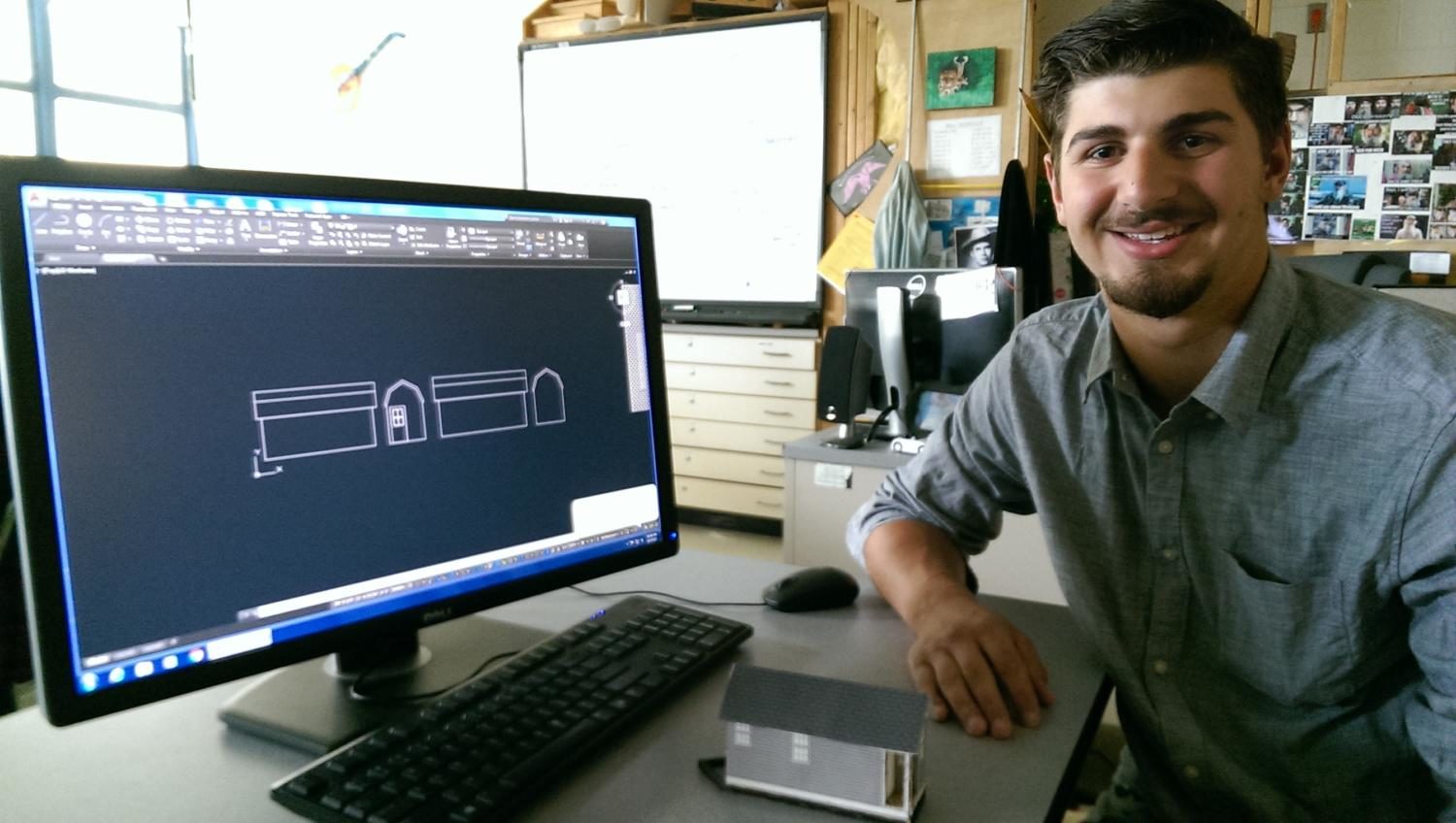Tiny house promises big lessons
Sometimes big things can come in small packages. At least that’s what industrial arts teacher Mr. James Ziegler hopes when students build a “tiny house” next school year.
With the approval of administration and a grant from the Hammonton Education Foundation, Ziegler will oversee students build a tiny house as part of the curriculum next year. This construction project will integrate the basics and intricacies of building a home on a smaller and more manageable scale.
“Students will learn the usual carpentry that building a home requires,” Ziegler said, “But now, they will also learn the plumbing, electrical work and so much more of the things that help make a home work.”
A tiny house can be pulled behind a truck similar to the way a camper is towed, but it is built more like a small standard residential home. Ultimately, it can sit on a lot and serve as a person’s primary residence. While the typical American home is around 2,600 square feet, the typical tiny house is between 100 and 400 square feet.
“I initially learned about these new products from TV and was inspired to bring the learning experience that it could have to the students of HHS,” Ziegler said.
The vision for the project isn’t limited to one class either. Others will contribute to the project, including Ms. Daniels C.A.D.D class, Mr. Toothman’s art class, The Builder’s Club and its advisers Mr. Watkinson and Ms. Curry, Mr. Joesph’s Digital Cinema class, the graphic design classes of Ms. Throckmorton and Mr. Arena, and Mr. Cote’s CP Materials Processing class.
Students will help plan and determine the timetables in student “focus groups” that will research all aspects of the process before making a master chart of all steps in a presentation which will be referred to throughout the year.
Building a tiny house won’t be without its challenges. The storage and sharing of equipment to construct it will need to be worked out as multiple classes share it. Transporting the project on and off the loading dock will also require strategy and careful planning.
As Ziegler noted, “it will be the longest 30 inches of my life.”
The end goal is for students to learn practical, real-life skills with hopes that a real person or family will actually purchase it.
The HEF provided $20,000 for the project, with the understanding that donations and grants from other organizations will be pursued.














